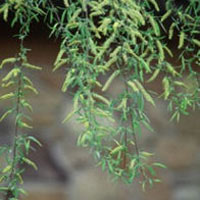Willow
 © Steven Foster
© Steven FosterParts Used & Where Grown
The willow tree grows primarily in central and southern Europe, although it is also found in North America. The bark is used to make herbal extracts.
- Reliable and relatively consistent scientific data showing a substantial health benefit.
- Contradictory, insufficient, or preliminary studies suggesting a health benefit or minimal health benefit.
- For an herb, supported by traditional use but minimal or no scientific evidence. For a supplement, little scientific support.
Our proprietary “Star-Rating” system was developed to help you easily understand the amount of scientific support behind each supplement in relation to a specific health condition. While there is no way to predict whether a vitamin, mineral, or herb will successfully treat or prevent associated health conditions, our unique ratings tell you how well these supplements are understood by the medical community, and whether studies have found them to be effective for other people.
For over a decade, our team has combed through thousands of research articles published in reputable journals. To help you make educated decisions, and to better understand controversial or confusing supplements, our medical experts have digested the science into these three easy-to-follow ratings. We hope this provides you with a helpful resource to make informed decisions towards your health and well-being.
This supplement has been used in connection with the following health conditions:
| Used for | Amount | Why |
|---|---|---|
Low Back Pain | Take an extract supplying 240 mg of salicin daily | Willow bark is traditionally used for pain and conditions of inflammation. According to one study, taking high amounts of willow bark extract may help people with low back pain. |
Osteoarthritis | Take an extract supplying 240 mg of salicin per day | Willow has anti-inflammatory and pain-relieving properties. Although pain relief from willow supplementation may be slow in coming, it may last longer than pain relief from aspirin. |
Bursitis | Refer to label instructions | Some doctors recommend using the anti-inflammatory herbs boswellia, turmeric, willow, and topical cayenne ointment for bursitis.
|
Pain | Refer to label instructions | Willow bark has been used for centuries to decrease pain and inflammation. It appears to work by interfering with the process of inflammation and the pain-producing nerves in the spinal cord. |
Rheumatoid Arthritis | Refer to label instructions | Willow appears to be a long-lasting though slow-acting pain reliever. One trial found that willow bark combined with other herbs effectively relieved pain due to rheumatoid arthritis. |
Traditional Use (May Not Be Supported by Scientific Studies)
Copyright © 2025 TraceGains, Inc. All rights reserved.
Learn more about TraceGains, the company.
The information presented by TraceGains is for informational purposes only. It is based on scientific studies (human, animal, or in vitro), clinical experience, or traditional usage as cited in each article. The results reported may not necessarily occur in all individuals. Self-treatment is not recommended for life-threatening conditions that require medical treatment under a doctor's care. For many of the conditions discussed, treatment with prescription or over the counter medication is also available. Consult your doctor, practitioner, and/or pharmacist for any health problem and before using any supplements or before making any changes in prescribed medications. Information expires December 2025.
